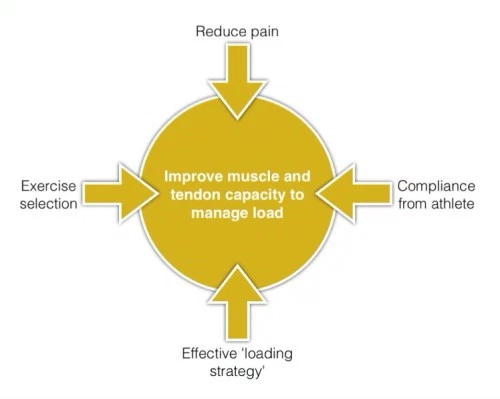In my last article, How to Deal with Overuse Injuries, I discussed how total rest might not be the best thing. It centers around the fact that the body adapts to stress, and total rest means the body adapts to doing NOTHING, which leads to pain when we start back to our activity. Check out the link above for more of a background.
Our bodies are jedis at adapting to stress. That’s why our species is still here. Overuse injuries are stress>recovery. In order to heal properly, we must reverse this ratio to stress<recovery. The example we are going to use today is the rotator cuff. Let’s say someone comes to see me with shoulder pain when raising their arm overhead. I’m a simple guy, and the first thing we need to do is assess the severity of the situation. The different levels are, it hurts after an activity, it hurts during the activity but warms up, it hurts during the whole workout, and lastly, the athlete is unable to perform the activity. Of those 4 levels, you can guess which one is the easiest to fix. By the time someone is at level 4, we are looking at partial/full tears, severe tendinopathy, bursitis, basically stuff that is going to take some time to fix. For you see, the longer stress>recovery, the more of a hole is dug. The figure below outlines what needs to happen for complete healing to occur.

Next, we must find the cause of the problem. No, the cause is not the movements themselves, but rather the mechanics of the person performing them. The simple explanation is inadequate scapulohumeral rhythm. For every 2 deg of shoulder elevation, there should be 1 deg or scapular movement. If this is off, we have narrowing of the subacromial space, which leads to impingement, which leads to tendon damage. This is oversimplified, and I can put out another article describing this.
Once we’ve determined the cause of poor scapular mechanics, tightness/weakness, etc, we begin to address it. This is the long-term approach to fixing the problem. Now, what if the tendon was damaged or partially torn?
On top of correcting the mechanics, we have to stimulate the tissue to adapt. In the beginning phases of an injury, there is active inflammation. During this time we avoid stretching, and want active range of motion(AROM). This is unloaded, or very light loaded high rep movement. This stimulates fibroblasts(cells that build new tissue), as well as angiogenesis(blood vessel formation) in the injured area. This delivers more O2 and nutrition as well as stimulates the proper alignment of new tissue. We are always replacing tissue. What the body needs is constant signaling to tell where and how to organize the new tissue. We want the body to replace the new tissue with what’s dense regular connective tissue. The fibers are arranged together to withstand stress with the line of applied stress(exercise). If there is no stress, the body replaces the injured tissue with dense irregular connective tissue. This is not as elastic, and the fibers aren’t organized to withstand stress in anyone direction. Think a tangled ball of yarn. This is the composition of scar tissue.
The mistake people make is they stop all this stuff once they aren’t hurting. Our goal is to improve the load tolerance of the tissue. At this point, we progress to HSR, or heavy slow resistance training. In order to improve load tolerance, we need time under tension! This is tempo work. I like to use 3 sec concentric, 3 sec pause, 3 sec eccentric to start off. Begin with a load that you can do this with no more than 2/10 pain. Tempo movement load the tendon without using it as a spring. Once HSR can be performed 3x wk without an increase in symptoms, its time to ramp it up. For the shoulder, an easy way to ramp it up is simply make the tempo longer with the crossover cables if you don’t have access to heavier bands.
Once the person is on the upswing, the last and quite possibly most important thing has to happen. They need to talk with their coach and focus on correcting the movement flaws with in the exercise. This often means taking a few steps back, but ultimately, it will result in a giant leap forward, with the person being stronger than ever before. If you need help with anything I’ve discussed, send an email to clint@onelifephysicaltherapy.com
Train hard, train smart,
Clint Russell, DPT
- www.squatuniversity.com
- https://www.physio-pedia.com/Tendinopathy_Rehabilitation







